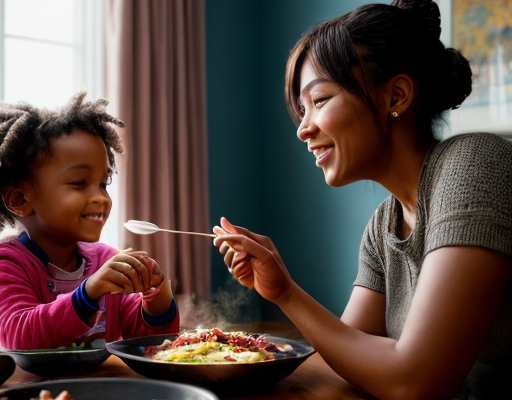
The Art of Harmonious Family Dynamics: Expert Strategies for Fostering Understanding and Cooperation
The Art of Harmonious Family Dynamics: Expert Strategies for Fostering Understanding and Cooperation
Family dynamics are complex and can often be a source of stress, but with the right strategies and understanding, harmony within the family unit can be greatly enhanced. This article delves into the art of creating harmonious family dynamics, focusing on expert strategies that foster understanding and cooperation among family members. From communication practices to conflict resolution, these insights aim to educate and inspire families to build stronger, more cohesive relationships.
Understanding Family Dynamics
Before delving into strategies for improving family relationships, it’s essential to understand what family dynamics are. Every family has its unique culture and set of interactions that dictate how members relate to one another. These interactions are often shaped by various factors, including individual personalities, parental styles, and shared experiences.
Importance of Effective Communication
Effective communication is the cornerstone of positive family dynamics. It involves actively listening, expressing thoughts and feelings openly, and fostering an environment where each member feels heard and respected. Practicing clear and compassionate communication can reduce misunderstandings and strengthen bonds.
Embracing Individual Differences
Each family member is an individual with unique traits and perspectives. Embracing these differences, rather than trying to change them, can reduce tensions and promote a more harmonious atmosphere. Acknowledging and celebrating individuality also encourages personal growth and self-esteem.
The Role of Empathy in Relationships
Developing empathy within the family unit is a powerful way to enhance understanding and cooperation. When family members can empathize with each other’s feelings and viewpoints, they are better equipped to navigate conflicts and support one another during challenges.
Setting Healthy Boundaries
Boundaries are integral to any relationship, including those among family members. Setting and respecting these limits helps to establish mutual respect and prevent resentments. Family members must communicate their boundaries clearly and be prepared to uphold them consistently.
Nurturing Family Traditions and Shared Experiences
Creating and maintaining family traditions and shared experiences can reinforce a sense of unity and belonging. These activities provide opportunities for family members to bond and create lasting memories, fostering a positive familial culture.
Conflict Resolution Techniques
Conflict is a normal part of family life, but addressing it constructively is vital for maintaining harmony. Learning and implementing conflict resolution techniques can help family members resolve disputes amicably and prevent future issues from escalating.
Encouraging Teamwork and Collaboration
Instilling a sense of teamwork can encourage cooperation and reduce selfish behaviors. Through collaborative activities and responsibilities, family members learn to work together towards common goals, which enhances the overall family dynamic.
Role Modelling Positive Behaviours
Parents and caregivers play a critical role in shaping family dynamics through their behaviors. By modeling positive attitudes and actions, they can influence their children to follow suit, promoting a healthy and harmonious family environment.
Utilizing Positive Reinforcement
Positive reinforcement is an effective strategy for encouraging desirable behaviors within the family. Recognizing and rewarding each other’s efforts and accomplishments can boost morale and motivate members to contribute positively to the family dynamics.
Implementing Fair and Consistent Discipline
Discipline is essential in guiding behavior and maintaining order, but it must be fair and consistent to be effective. Families should establish clear rules and consequences, ensuring that all members understand and agree to them.
Supporting Personal Growth and Independence
While family unity is crucial, so is supporting each member’s individual growth and independence. Encouraging personal pursuits and providing space for independence can foster self-reliance and confidence.
Incorporating Flexibility and Adaptability
Families are dynamic entities that evolve over time. Being flexible and adaptable to changes within the family structure and life circumstances can help maintain stability and resilience in the face of challenges.
Cultivating an Attitude of Gratitude
An attitude of gratitude can significantly improve family dynamics. Encouraging family members to express appreciation for one another strengthens relationships and promotes a positive outlook.
Practicing Forgiveness and Letting Go of Grudges
Holding onto grudges can be detrimental to family harmony. Practicing forgiveness allows family members to move past conflicts and build a more cohesive and supportive family unit.
Seeking External Support When Necessary
Sometimes, families may encounter issues that are difficult to resolve internally. In such cases, seeking help from external support systems like family therapists can be beneficial in facilitating understanding and cooperation.
Ensuring Quality Time Together
Quality time is essential in maintaining and strengthening family bonds. Families should prioritize spending time together, engaging in meaningful conversations and activities that promote closeness and harmony.
Maintaining a Healthy Work-Life Balance
Striking a healthy work-life balance is crucial for parents and caregivers, as it affects family dynamics. Managing time effectively to ensure that family life does not become overshadowed by professional responsibilities creates a more balanced and harmonious home environment.
Conclusion
Harmonious family dynamics are cultivated through a combination of understanding, empathy, clear communication, and mutual respect. By implementing the strategies outlined in this article, families can create a supportive environment that values each member’s personal growth while fostering unity. As each family is unique, these strategies should be applied in a way that fits the specific needs and culture of the family, keeping in mind that the art of harmonious family dynamics is an ongoing and evolving process.

